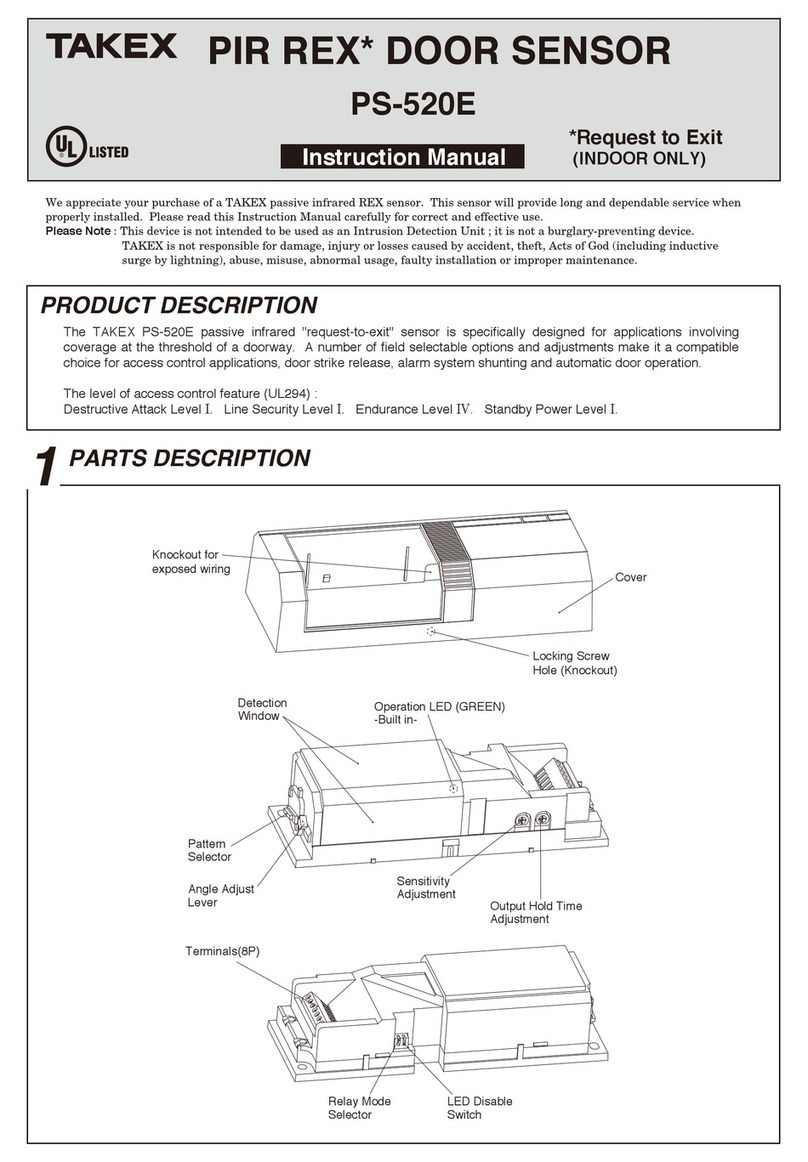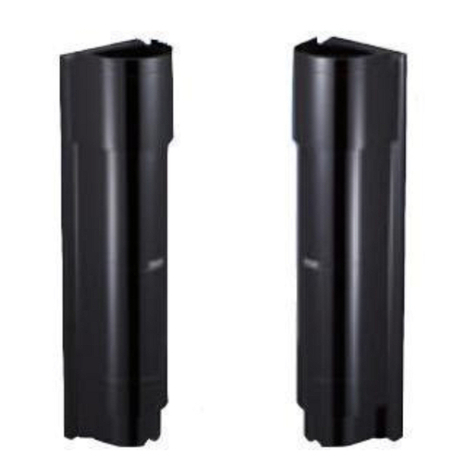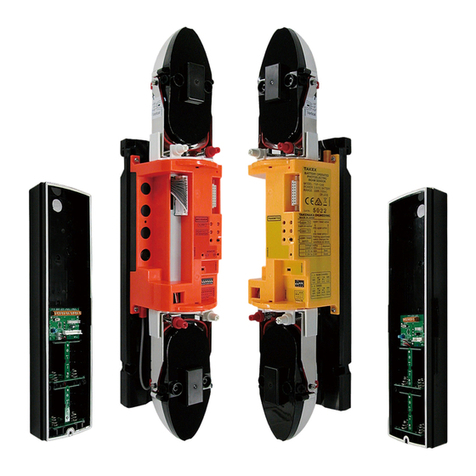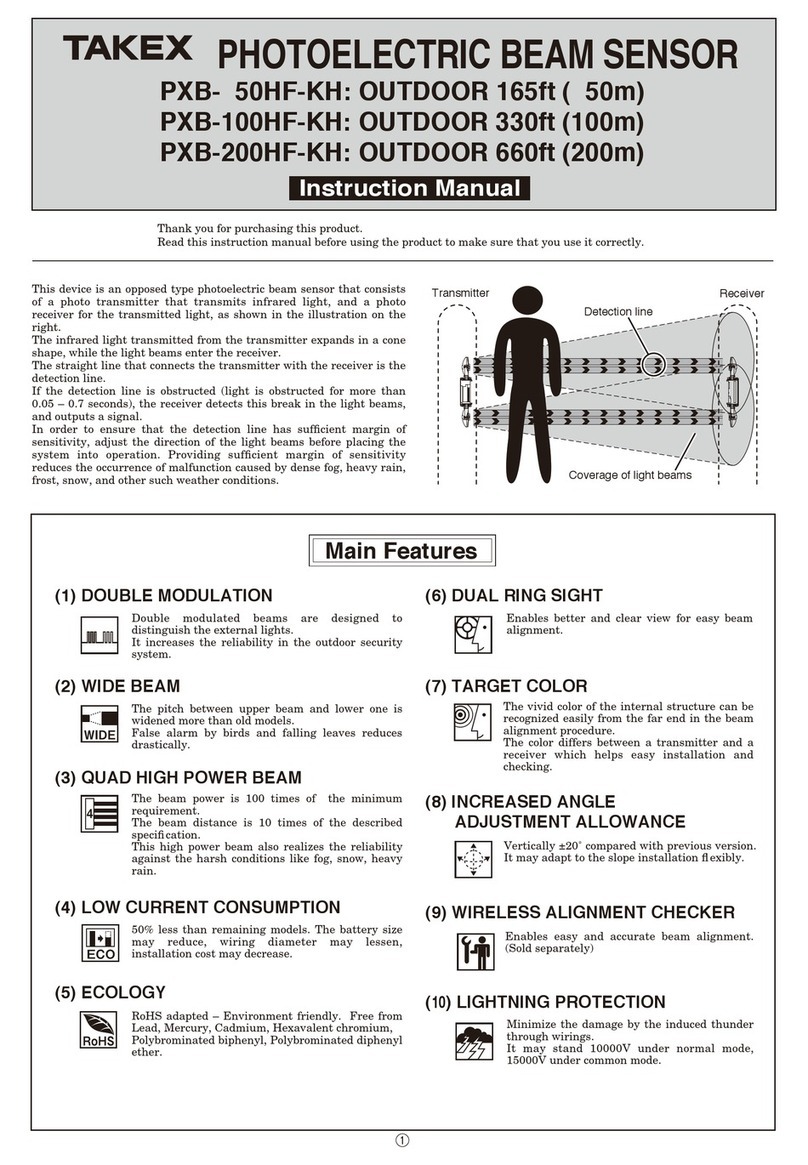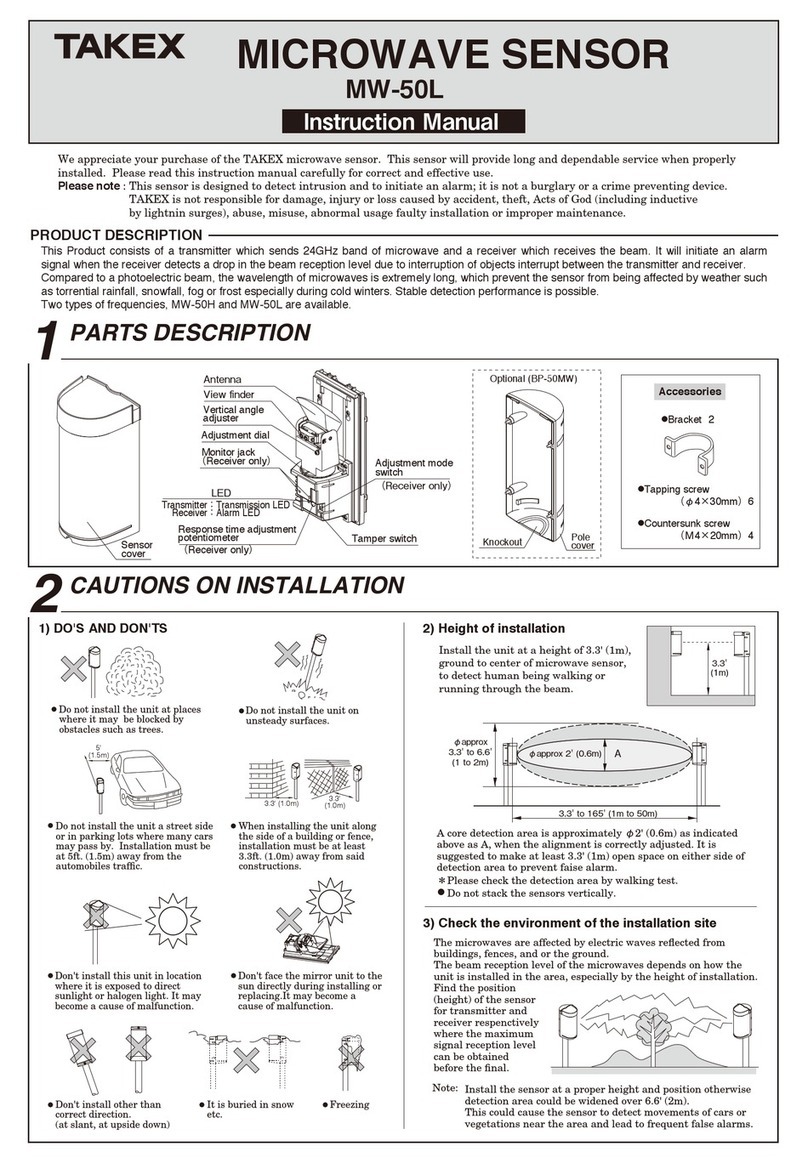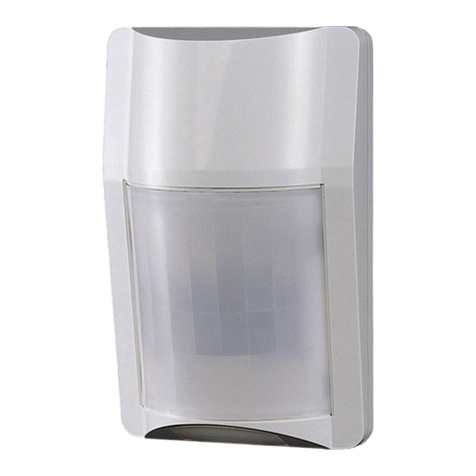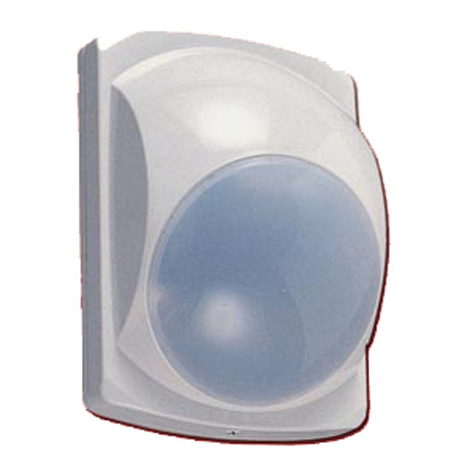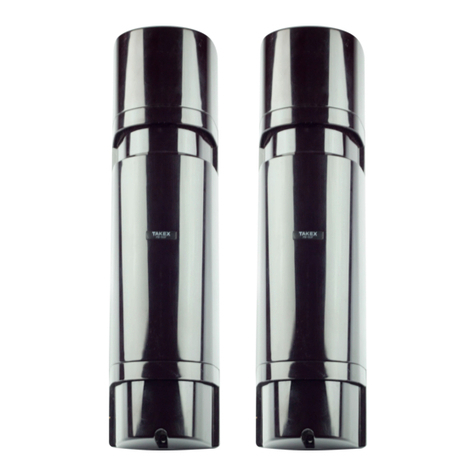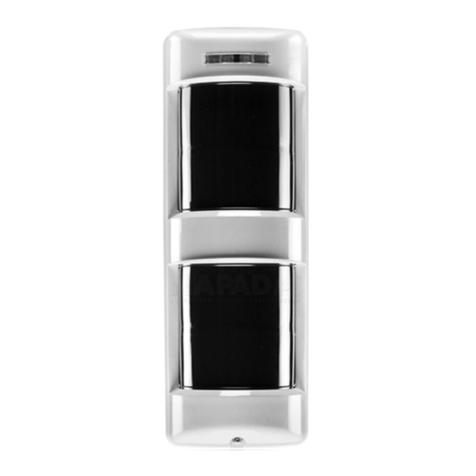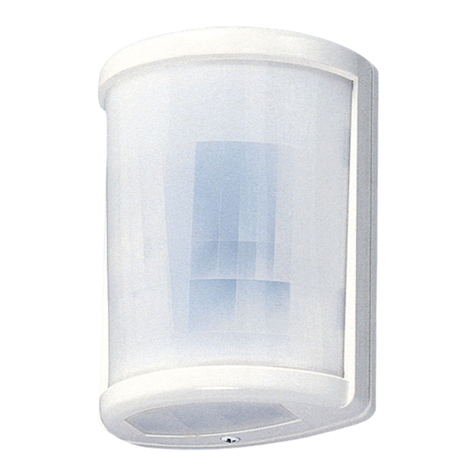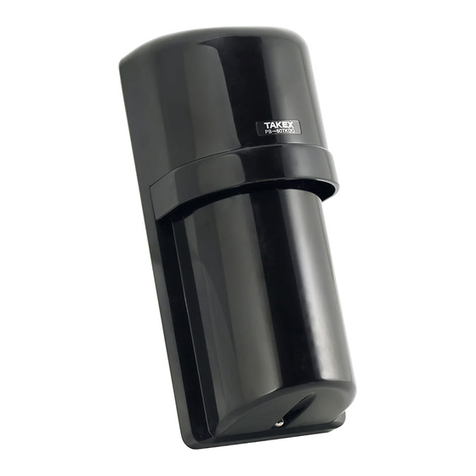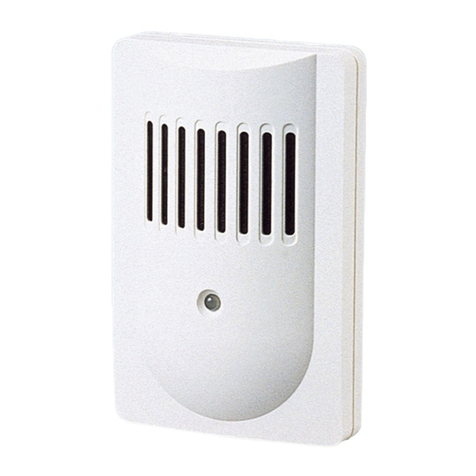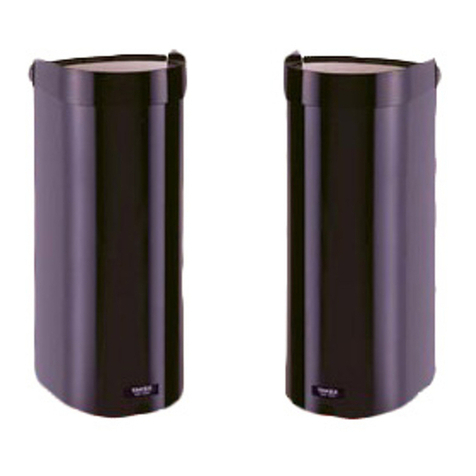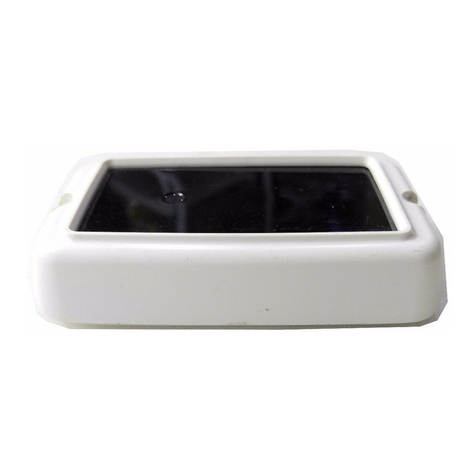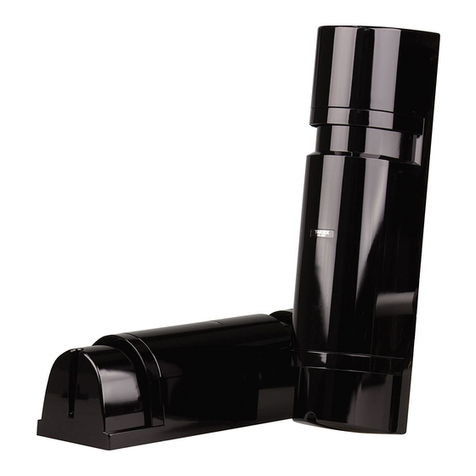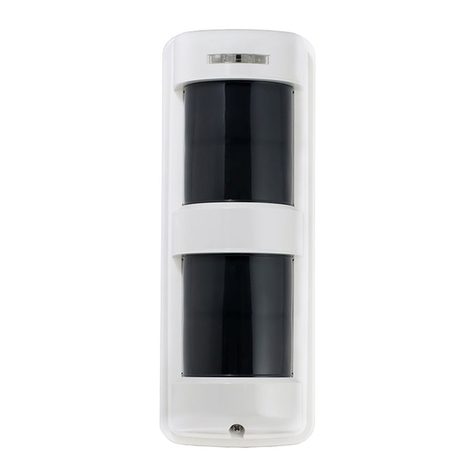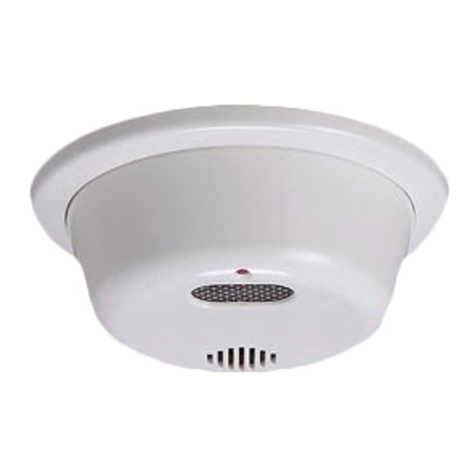②
3HWVVXFKDVGRJVFDWVDQGELUGV
6KLHOGLQJREMHFWV 3ODFHVWKDWSHRSOHFDQHDVLO\WRXFK
6WURQJOLJKWWKDWKLWVWKHVHQVRU
6WURQJYLEUDWLRQDQGRUHOHFWULFQRLVH
Warning
Caution
Do not use the unit with power voltage levels other than
those specified. Failure to follow this may result in fire,
electric shock, and/or malfunction.
Do not connect devices that exceed the indicated capacity to
the output contact of the unit. Failure to follow this may
result in electric shock, fire, and/or malfunction.
Do not touch terminals with wet hands. Failure to follow
this may result in electric shock.
If the following errors/malfunctions occur, power off the
unit immediately, and contact your dealer.
Failure to follow this may result in fire, electric shock,
and/or malfunction.
s3MOKEABNORMALODORANDORSOUNDAREFOUND
s,IQUIDSUCHASWATERANDORFOREIGNMATERIALHAS
entered the unit
s4HEUNITISDEFORMEDANDORPARTSAREDAMAGED
$ONOTDISASSEMBLEORMODIFYTHEUNIT
Failure to follow this may result in fire, electric shock,
and/or malfunction.
Mount the unit on a solid ceiling or wall surfaces where
reinforcement materials are used. If you mount the unit on
NONWOODPLASTERBOARDORCONCRETESECURELYMOUNTITUSING
anchors and mounting screws that match the wall
materials. Failure to follow this may result in injury and/or
property damage if the unit falls.
Do not install the unit in a place and/or with a mounting
method that cannot support its weight.
Failure to follow this may result in injury and/or property
damage when the unit falls.
Do not apply impact to the unit.
Applying strong impact to the unit may result in
performance deterioration and/or damage to the unit.
4HEUNITMAYNOTOPERATEPROPERLYNEARDEVICESTHAT
generate a strong electric or magnetic field. Also, devices
near the unit may not operate properly due to the
magnetic field and/or magnetism generated from the unit.
-AKESURETOCHECKITBEFOREOPERATION
Make sure to perform sufficient operation checks on the
WHOLESYSTEMBEFOREOPERATION
3ECURELYCONDUCTINSTALLATIONWORKACCORDINGTOTHE
instruction manual. Also, make sure to use the supplied
accessories and specified components. Failure to follow this
may result in injury and/or property damage in the event
of fire or electric shock, if the unit falls.
#ONTACTQUALIFIEDPERSONNELFORANYELECTRICALWORK
NECESSARYFORINSTALLATIONIFREQUIRED
Failure to follow this may result in fire and/or electric
shock.
$ONOTINSTALLTHEUNITINPLACESSUBJECTTOOILSMOKESTEAM
high humidity, and/or a lot of dust. Electricity transmitted
through oil, water, and/or dust may result in fire, electric
shock, and/or false operation.
$ONOTPERFORMAERIALWIRINGOFPOWERANDSIGNALCABLES
Failure to follow this may result in electric shock, fire,
and/or malfunction.
Passive infrared sensors are designed to detect changes of
far-infrared ray energy. Energy changes largely when the
HUMANBODYMOVESACROSSTHEDETECTIONAREA(OWEVER
ENERGYDOESNOTCHANGEGREATLYWHENTHEHUMANBODY
comes closer in a straight line, or stops.
In addition, if the
detection area
environment generates
similar changes due to
certain factors, the unit
will issue an alarm
WITHOUTBEINGABLETO
judge properly.
Avoid installing the unit in the following places. Otherwise,
false detection may occur.
s0LACESSUBJECTTOSTRONGDIRECTORREFLECTEDLIGHTSUNLIGHT
spotlight)
s0LACESSUBJECTTORAPIDTEMPERATUREFLUCTUATIONSAIR
OUTLETSOFAIRCONDITIONINGEQUIPMENTETC
s0LACESWHEREMOVINGOBJECTSAREINCLUDEDINTHEDETECTION
AREATREESBRANCHESANDLEAVESLAUNDRYETC
s0LACESSUBJECTTOSTRONGVIBRATIONANDORELECTRICNOISE
s0LACESWHEREDOGSCATSBIRDSANDORAUTOMATICCLEANING
ROBOTSMAYPASS
s0LACESWHERESHIELDINGOBJECTSINCLUDINGGLASSAND
transparent resin, etc.) are included in the detection area
SHADINGPARTSWILLNOTBEDETECTED
s0LACESWHERETHESENSORPARTLOOKSINCLINEDFROMTHEFRONT
VIEWTHEAREACANNOTBEPROPERLYCONFIGURED
s0LACESTHATINTRUDERSCANEASILYTOUCH
3ETTHEAREAWITHINTHERATEDDETECTIONDISTANCERANGE
according to the instruction manual. If you use the unit
outside the specified range, an appropriate area will not
HAVEBEENCONFIGUREDANDTHEUNITMAYOPERATEUNSTEADILY
and/or detection may fail.
$LURXWOHWVRIDLUFRQGLWLRQLQJ
HTXLSPHQW
6XQOLJKWUHIOHFWLRQ
7UHHVEUDQFKHVDQGOHDYHVODXQGU\
Warning Caution
$SURKLELWHGDFWLRQ\RXPXVWQRWGR
$QDFWLRQ\RXPXVWGRDQGLQIRUPDWLRQ\RX
VKRXOGNHHSLQPLQG
35(&$87,216 7KLVPDQXDOGHVFULEHVSUHFDXWLRQVE\FODVVLI\LQJWKHPEDVHGRQGHJUHHVRIGDQJHUDQG
GDPDJHWKDWZRXOGEHJHQHUDWHGLIXVLQJWKHXQLWLQFRUUHFWO\
Be sure to observe
7KLVLQGLFDWHVWKHSRVVLELOLW\RIVHYHUH
LQMXU\DQG HYHQ GHDWK LI LJQRUHG RU D
XVHUKDQGOHVWKHXQLWLQFRUUHFWO\
7KLV LQGLFDWHV WKH SRVVLELOLW\ RI PLQRU LQMXU\ DQGRU
GDPDJH WR SURSHUWLHV RU RI D QRWLILFDWLRQ GHOD\ LQ
\RXU V\VWHP GXH WR IDOVH RSHUDWLRQV DQGRU
QRQGHWHFWLRQLILJQRUHGRUDXVHUKDQGOHVWKHXQLW
LQFRUUHFWO\
We categorize these precautions throughout the manual using the following symbols.
